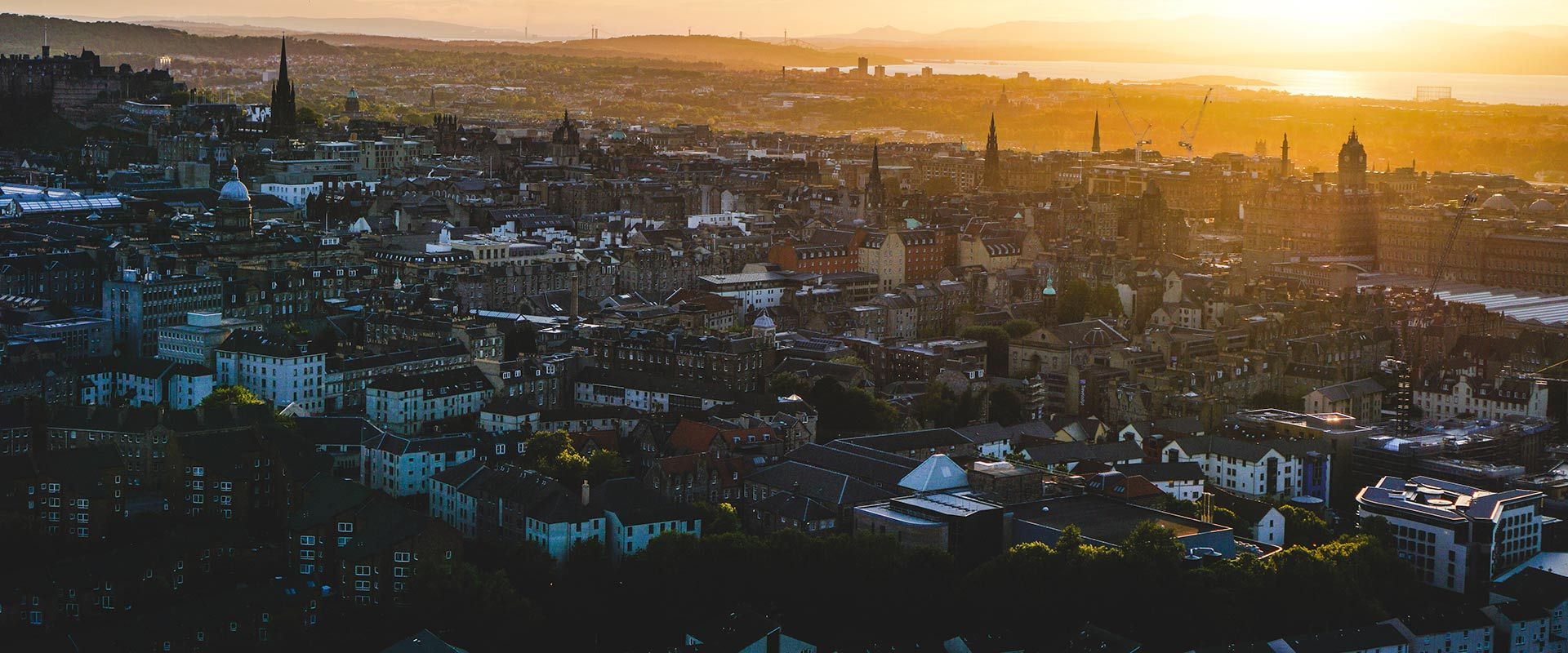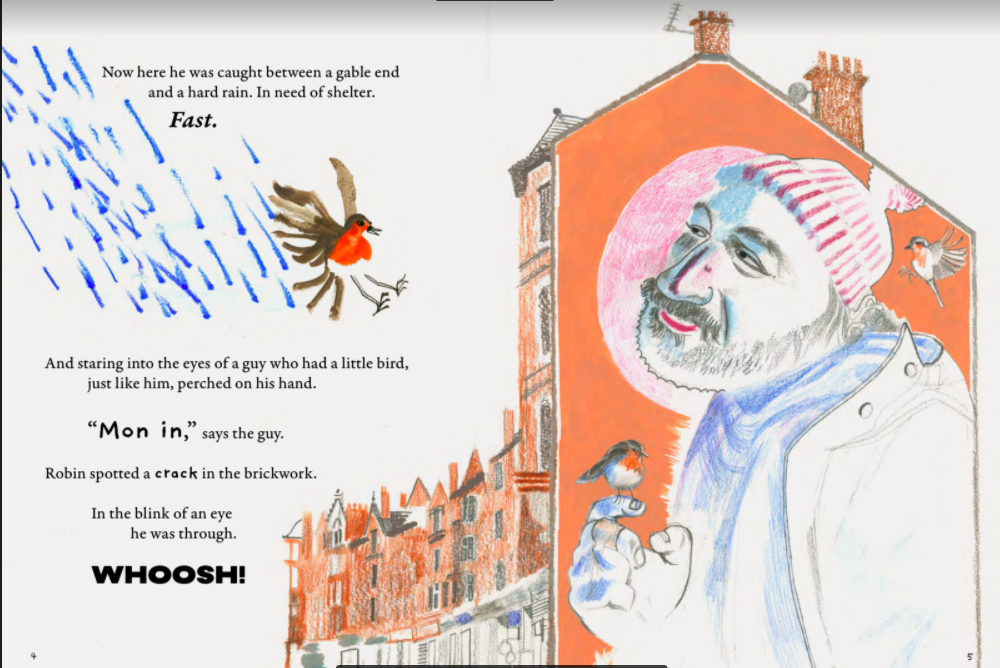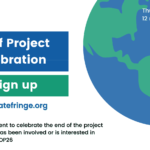A look back at COP, and the two years of preparation that came before. Kat Jones asks what has been achieved and wonders ‘what next?’ for Scotland and Glasgow.
It has been wonderful, these last few days, as people leave Glasgow at the end of COP, to see the twitter messages thanking the people of the city for the welcome, warmth and for making this COP a bit special. Many note the contrast between the official COP spaces and the vibrant, welcoming and inclusive civil-society-run activities and spaces.
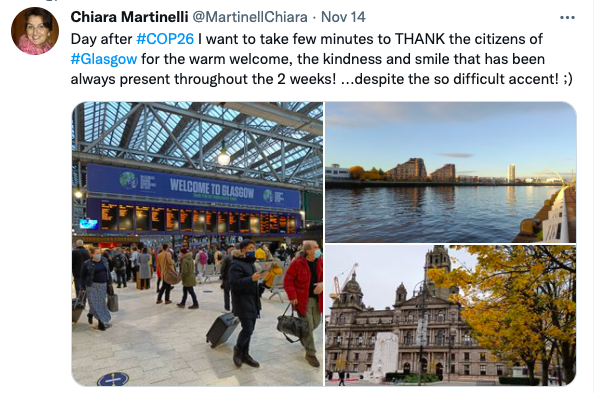
As a longtime resident of Glasgow, the city’s famous friendliness and the strength of grassroots organising and history of social movements, was at the front of my mind when SCCS started organising for COP26 back in September 2019. We knew that Glasgow’s people would rise to the challenge of being the hosts of COP26.
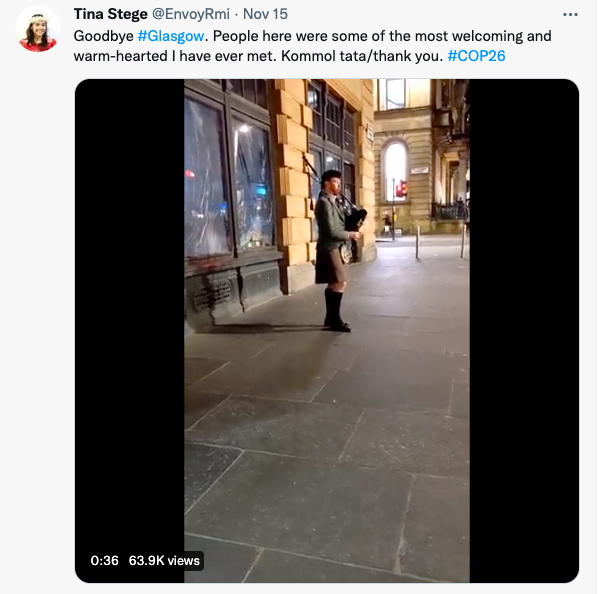
It’s not just the friendliness of the city that made Glas ghu, the ‘Dear Green Place’ a significant place for a COP. Her foundation myths concern a robin, a salmon, a tree, and a bell, but the city became the engine of the industrial revolution, funded by riches gained from being the second city of the empire. The COP26 discussions were held on the infilled docks where ships laden with steam engines and machinery would have been sent all around the world.
Knowing that being the host city of a COP can burn out local civil society groups we wondered, how could we help create a movement around COP that didn’t burn people out, but would build energy and connections and momentum in Glasgow, and which could truly embody the city’s motto, ‘Let Glasgow Flourish’.
So with a vision to provide welcome, resources and facilities for those travelling to COP to help campaigners do the best job they could, while also building up and expanding the climate movement in Scotland, we started.
Bringing it all together
Knowing Glasgow’s incredible grassroots organisers, arts community and active civil society, and having extremely limited budget (we didn’t get our first major grant to support work related to COP until we’d been organising for 8 months), we focused on creating platforms to connect efforts and join people up: bringing the goodwill and enthusiasm to be involved in COP to where it was needed.
To start with it was important to us that we brought together the full breadth of the climate movement in Scotland, and opened up space for people and organisations new to climate campaigning, wherever they stood on the political spectrum.
Heavily inspired by the Edinburgh Fringe whose founding principle is ‘to be an open access festival that accommodates anyone with a desire to perform and a venue willing to host them’, and recognising that there would be so much going on that no-one would be able to keep track of it, we created the Climate Fringe.
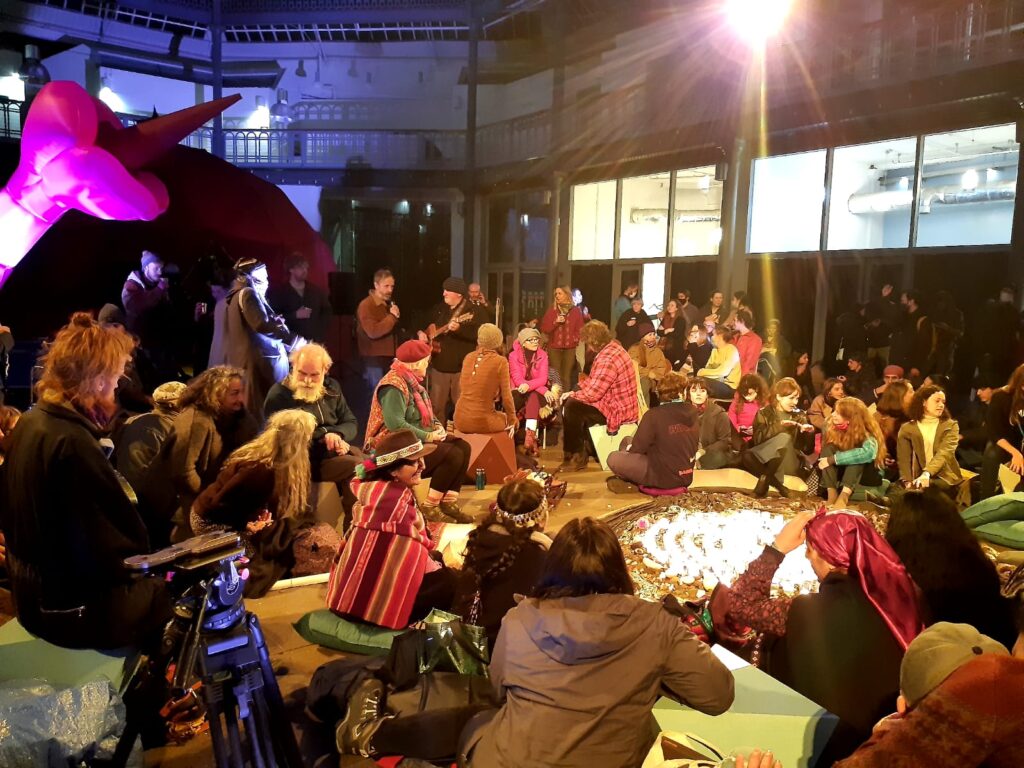
The Climate Fringe is an events platform designed to be open, warm and welcoming, with a distinct sense of place in Scotland and where anyone in civil society could upload their event and feel part of something bigger. In fact, a key element was that you didn’t even need to know it existed to be part of it – we went out and searched for climate and environment-related events, on twitter, eventbrite and through our networks, uploading them and declaring them all part of the Climate Fringe.
So this gave a place that, in theory, anyone in civil society could connect what they were doing to COP, and to each other, and gave the potential for a unifying feel for civil-society activity around COP. We wanted to give people in Scotland, and particularly Glasgow, a ‘help-yourself’, open access way to be involved in COP, with the lowest possible barriers to taking part.
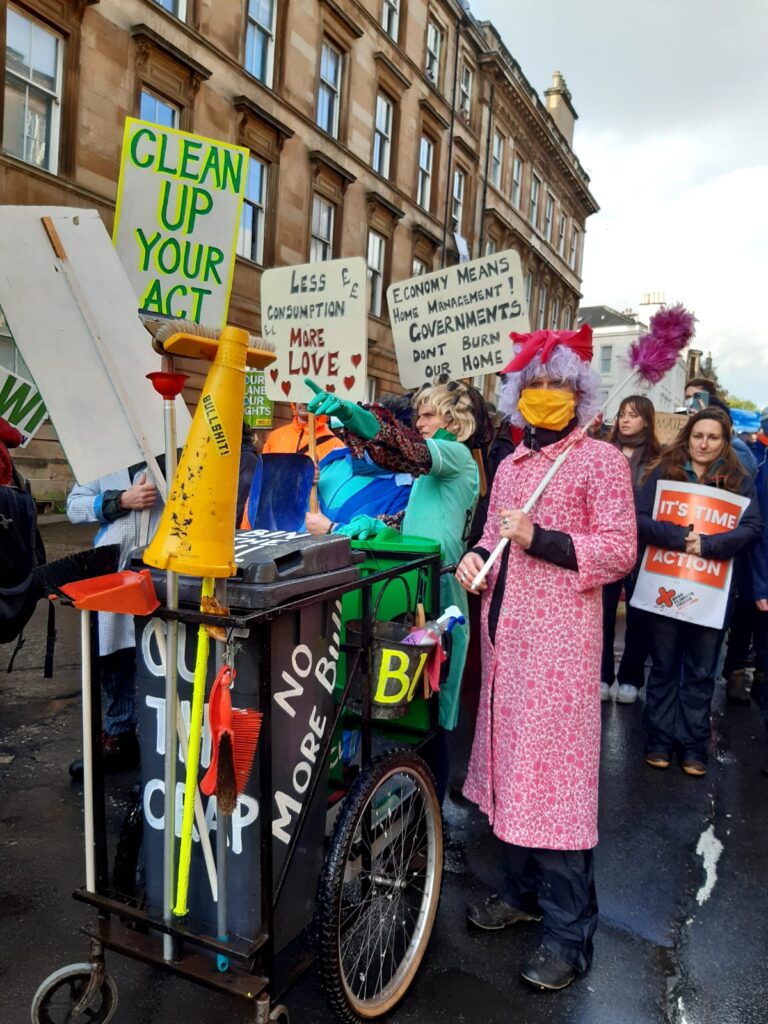
And, amazingly, it happened – there were more than 1000 civil-society events uploaded on the Climate Fringe over the two weeks of COP, and the site rose to the top of the search rankings for ‘Events at COP26’, pipped only at number one by the UK Government official COP website. Given the big money that is invested by corporations, countries and global NGOs to get their messages heard at COP, this felt like a real achievement for a website that cost £3,500 to set up, and with no advertising budget.
A Glasgow Welcome
Glasgow is filled with welcoming, friendly people and we wanted to create a platform to link local people and their hospitality to international visitors.
The COP26 Homestay Network, created with Human Hotel and COP26 Coalition, connected people who wanted to make a difference for COP and could offer a spare room or a sofa bed, to those campaigners from the global south, indigenous groups and young people, who would be least likely to have the resources to travel to COP.



The Homestay Network created a warmth and home-from-home to give civil-society participants support in the unrelenting work of COP while also giving the opportunity for hosts to feel more connected to COP, through their guests. From our initial evaluation it is clear that the network, which had more than 1200 hosts and helped 1600 guests, allowed many people to come to COP who would otherwise not have been able to afford it, and we have heard so many stories of relationships built, and of local people drawn into the climate movement by their guests.


Helping COP visitors to find information of the numerous and amazing locally and community-run cafés, restaurants, community projects and gardens, bike shops and zero-waste shops was also an important part of creating the welcome. We used an open source mapping system, Green Maps, to create a crowd-sourced map to help activists and delegates find sustainable community and locally-run places to eat and shop, bringing income into Glasgow’s local communities and showing COP visitors the very best of Glasgow’s friendly, local gems. The entries on the Glasgow Green Map snowballed in the months ahead of COP with nearly 300 places listed and it had at least 6500 visits during COP.

Finding Space
The most challenging part of the job in bringing together the facilities and welcome for civil society coming to COP, was trying to tie down venues for civil society activity. So much money floods into a COP city and all the large commercial venues were booked for far more money than we could imagine raising. Covid and other challenges compounded our issues with tying down adequate dedicated space for us to act as the main COP civil society hub and for other space for key groups.
The opening ceremony for the flame of the Minga Indigena which burned for the whole two weeks of COP26 at the Hidden Gardens
Just ahead of COP we created ‘Climate Fringe Week’ at the end of September, to coincide with New York Climate Week when the world’s leaders gather in an important pre-COP UN meeting. In England and Wales at the same time our sister organisation TCC was running Great Big Green Week. We had over 200 events across Scotland, with the largest concentration happening in Glasgow, and most delivered by grassroots and community groups.
A key aim for Climate Fringe week was to channel the enthusiasm in local groups who wanted to deliver events during COP, and divert it to a month ahead of COP. This meant that they would get the best media hit, create a buzz in the COP run-up, creating more awareness of COP than we could create ourselves in local communities, and, most importantly for our planning, to ensure that community venues and community energy in Glasgow were freed up during COP for supporting the international climate movement.
This element, of helping keep local community-managed venues in the city available during COP, became really important when it came to providing the spaces for events and meetings that visiting civil society groups need during COP when we lost a key venue with weeks to go.
We changed our approach and, instead, gathered a network of community venues and church halls (the Spaces for Change network) that had availability during COP and put all the information relevant onto our website and a map. Groups looking for a space for meetings or events during COP booked directly with the venues. We had 70 rooms on the list and the webpage received 5300 hits between the start of September and the end of COP. I am hoping that we can gather more feedback from these venues about the connections made and the events and activities that happened, but from what we already know, some very significant activities took place because they found a venue via ‘Spaces for Change’ (eg. the food resilience hub and a community kitchen that fed activists during the two weeks of COP).
Let Glasgow Flourish
But we still needed hubs and spaces for civil society to gather and work and meet and be welcomed, and space for the COP26 Coalition to use for their People’s Summit, and this is where Glasgow’s civil society and grass-roots really stepped up and created something special.
We still had Adelaide Place that we transformed into a warm, welcoming and relaxing café-hub during the day for working and meeting and sharing delicious food. A place where the daily COP26 Coalition Movement assemblies could take place, followed by our Open Mic Ceilidh Nights.

But what astounded me was how civil society hubs sprung up across Glasgow – from the Food Resilience hub at the Salvation Army right beside the COP venue itself, to a Youth Hub, and Arts hubs at the Dream Machine and the Briggiat. The Landing Hub, a giant marquee space sprung up along the Clyde which became home to many of the People’s Summit events, the Quakers offered space for reflection and stillness, and the GalGael Trust declared the Free State of Govan as a living alternative to our current earth-destructive systems. In all, we listed 17 community-run hubs on the Climate Fringe Website and there could have been more we didn’t know about.
Glasgow became a melting pot of creative, alternative, community-centred and bottom-up ways of living, the antidote to COP, the anti-COP. If COP was about talking, these spaces were about acting, and making it happen. Today.
The importance of culture and the arts in these non-COP spaces was very clear and one moment that will stick with me was listening to the children of Govan and the Joyous choir (of refugee and asylum seeker women) sing Karine Polwart’s song written for COP, Enough is Enough, as STORM, the four-storey high puppet awoke by the Clyde and walked through Govan towards COP to meet Little Amal, the puppet of a refugee child who has walked across a continent, from Syria. A physical meeting of the climate struggle and the struggle for migrant justice.
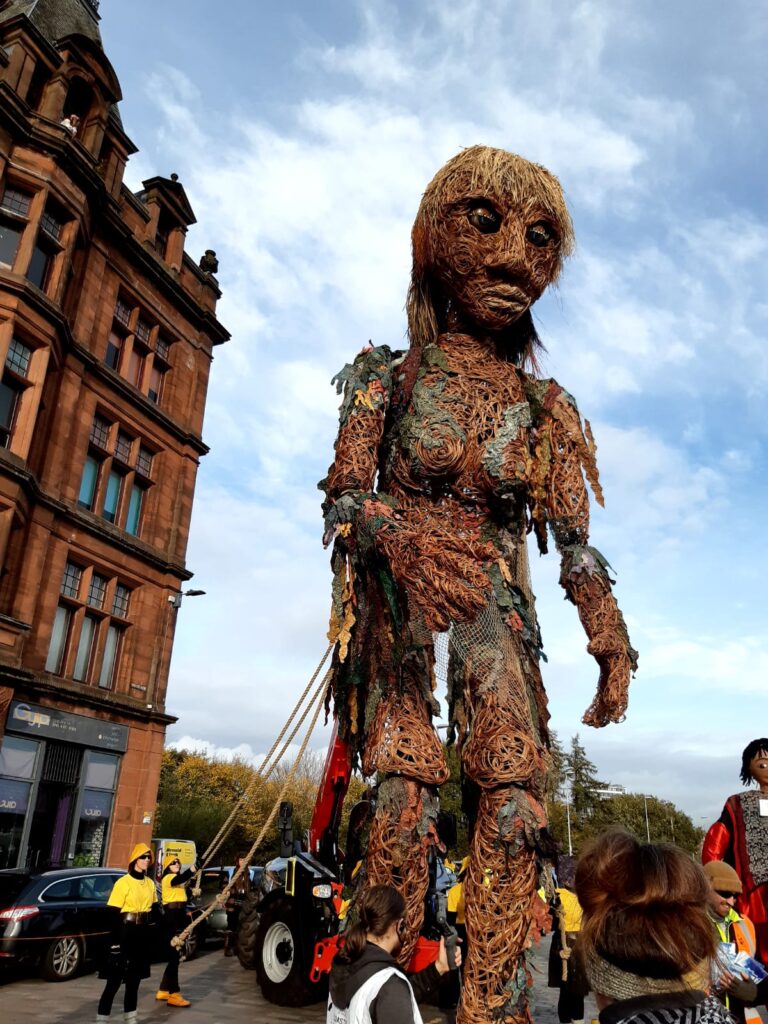
When we were in the difficult months ahead of COP, when it still felt like we had 10,000 miles to travel, and our energy was flagging after 18 months of working from home and trying to keep the fires of the vision alive amongst the uncertainty, a friend shared a Maori Whakataukī (proverb) with me.
“Nā tō rourou, nā taku rourou ka ora ai te iwi”
“With your basket and my basket the people will flourish”
And it has, amazingly, turned out that way. Looking back on those two weeks of COP it felt like everyone brought their basket, whether it was a spare bed for the homestay network, showing up to the march, volunteering for SCCS and the COP26 Coalition, offering space for an event in their community hall, putting a few of their local gems onto the Glasgow Green Map, bringing a poem or a song to the Open Mic Ceilidh to share, or creating a hub and a fortnight of events and activities.
It seems that Glasgow has more than stepped up as local hosts of COP. They have re-written the story of COP26, bringing a narrative of a future held by the people, and in the hands of communities who choose to change the direction of travel. It brought, despite the challenges of covid, an organised chaos of an authentic COP, a Conference of the People, to the outside spaces of COP26, to the Climate Fringe. I heard more than one person say that Glasgow will never be the same after this moment of collective effort. Glasgow Flourished.
It was only when I went back to a poem I had read during the first lockdown – ‘Natural Resources’ by Adrienne Rich – that I was able to understand what had happened in Glasgow during COP26. Glasgow’s communities and people, while world leaders talked and their negotiators tussled over wording in a statement, had been busily, quietly, reconstituting the world.
My heart is moved by all I cannot save
So much has been destroyed
I have to cast my lot with those, who, age after age,
Perversely, with no extraordinary
Power, reconstitute the world.
ADRIENNE RICH, “NATURAL RESOURCES”

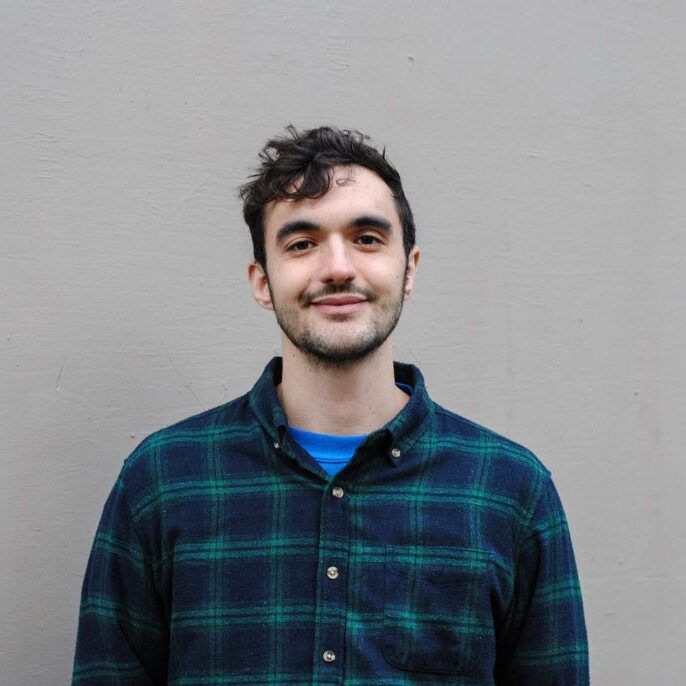
Nick Cullen
Nick is a past coordinator for the Climate Fringe platform and Climate Fringe Festival, working on strategy, website development and communications. He spent two years at SCCS in the lead up to COP26 and led on developing the Homestay Network, volunteering programme, COVID-19 safety, and many other aspects of logistics and operations in collaboration with the COP26 Coalition.

